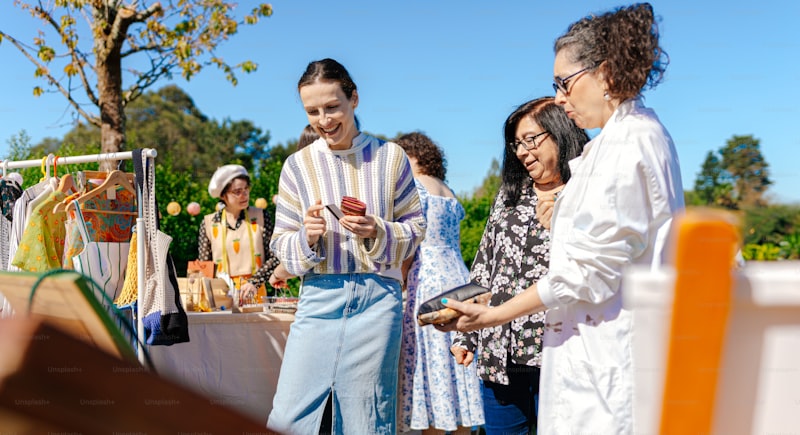Personalizing Cultural Ceremonies: Embracing Tradition While Celebrating Individuality
Introduction to Personalizing Cultural Ceremonies
In an increasingly globalized world, the significance of cultural ceremonies remains profoundly impactful, serving as essential rituals that define our heritage. However, the quest for personalization in cultural ceremonies allows individuals to express their unique identities, beliefs, and aspirations. This article explores ways to effectively personalize cultural ceremonies, highlighting best practices, potential challenges, and cultural considerations.
The Importance of Cultural Ceremonies
Cultural ceremonies are foundational expressions of identity and community. They encapsulate heritage, teachings, and shared histories, influencing both personal and collective experiences. Personalizing these events enables individuals and families to reflect their distinct characteristics while still honoring tradition.
Key Aspects of Cultural Ceremonies
| Aspect | Description |
| Tradition | The established practices and rituals passed down through generations. |
| Symbolism | Objects or actions that convey deeper meanings and values. |
| Community Involvement | Participation from family and community members enhances the collective experience. |
| Personal Touch | Integration of individual preferences and elements of personal significance. |
Ways to Personalize Cultural Ceremonies
There are several innovative approaches to personalize cultural ceremonies while ensuring that the essence of tradition is preserved. Below are some strategies that can be utilized:
1. Customized Rituals
Incorporating personalized rituals can infuse a ceremony with individuality. For instance, a wedding ceremony, which often includes cultural rituals such as exchanging vows, can also include personalized vows that express the couple's unique love story and values.
2. Specialty Attire
Attire plays a crucial role in cultural ceremonies. While traditional garments hold significant value, individuals can choose to add elements that resonate with their personal style or modify existing garments. For example, a bride might wear a culturally significant dress that features contemporary designs or colors that reflect her personality.
3. Unique Decorations
Decorating the venue with personal touches can enhance the cultural experience. Elements reflecting personal history, favorite colors, or family heirlooms can be woven into the décor. For instance, using photographs of loved ones at past ceremonies can create a meaningful backdrop that connects the past to the present.
4. Tailored Music Choice
Music sets the tone for any ceremony. While traditional music is often played, incorporating songs that carry personal meaning can heighten the emotional experience. A fusion of global sounds and personal favorites can lead to a more memorable occasion.
5. Inviting Personal Narratives
Encouraging storytelling adds a rich dimension to cultural ceremonies. Inviting family members to share anecdotes or lessons can strengthen bonds and reflect the values that are cherished within the community.
Challenges of Personalizing Cultural Ceremonies
While personalizing cultural ceremonies offers numerous advantages, there can be challenges. Balancing tradition with individuality is critical to ensure the significance of the ceremony is maintained. Here are some potential obstacles:
1. Resistance to Change
Some family members or community leaders may resist changes to established traditions. It’s essential to engage in open dialogues to discuss the importance of personalization and how it can coexist with tradition.
2. Cultural Sensitivity
Personalization must be approached with cultural sensitivity to avoid elements that may offend cultural norms or values. Being aware of historical contexts and addressing communal sentiments is vital.
3. Budget Constraints
Customizing ceremonies can often lead to increased costs. Individual aspirations should be aligned with budget constraints to ensure stress-free planning.
Making Personalization Work
To make personalization work without overwhelming tradition, it’s important to implement these practices tactfully. Here are tips for optimizing personalization:
1. Collaborate with Family and Community
Involve family members in the decision-making process. This promotes unity and ensures everyone feels represented in the ceremony.
2. Assess Cultural Significance
Evaluate the cultural significance of every personalized element. Understanding which aspects can be adapted and which cannot is crucial.
3. Balance Aesthetics and Meaning
Ensure that the personalized elements maintain a balance between aesthetic appeal and emotional significance. Each aspect should reflect personal meaning without overshadowing the traditions being celebrated.
Conclusion and Final Thoughts
Personalizing cultural ceremonies is a powerful way to celebrate individual identities while honoring collective heritage. This approach enriches the experience and creates lasting memories. While challenges may arise, open dialogue, cultural sensitivity, and a thoughtful approach can ensure a successful blend of tradition and personalization.
Recommendations:
As you embark on the journey to personalize your cultural ceremony, keep these key points in mind:
- Engage your family and community in discussions about personal choices.
- Be respectful of traditions and mindful of their meanings.
- Plan a budget that accommodates personalization without strain.
- Consult cultural experts or community leaders if necessary to navigate any complexities.

By thoughtfully personalizing cultural ceremonies, we not only celebrate the richness of our heritage but also honor our uniqueness in a world that embraces diversity.